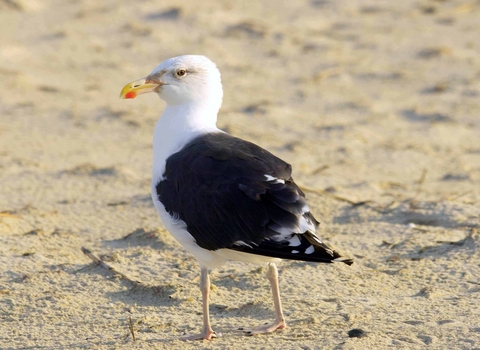
©Derek Moore
Great black-backed gull
This huge gull can be seen around most of the UK's coasts in summer, with some venturing inland in winter.
Scientific name
Larus marinusWhen to see
January to DecemberSpecies information
Category
Statistics
Length: 68-78cmWingspan: 1.5-1.6m
Weight: 1.7kg
Average lifespan: 14 years
Classified in the UK as Red following a 2024 update to the Birds of Conservation Concern 5: the Red List for Birds (2021).
